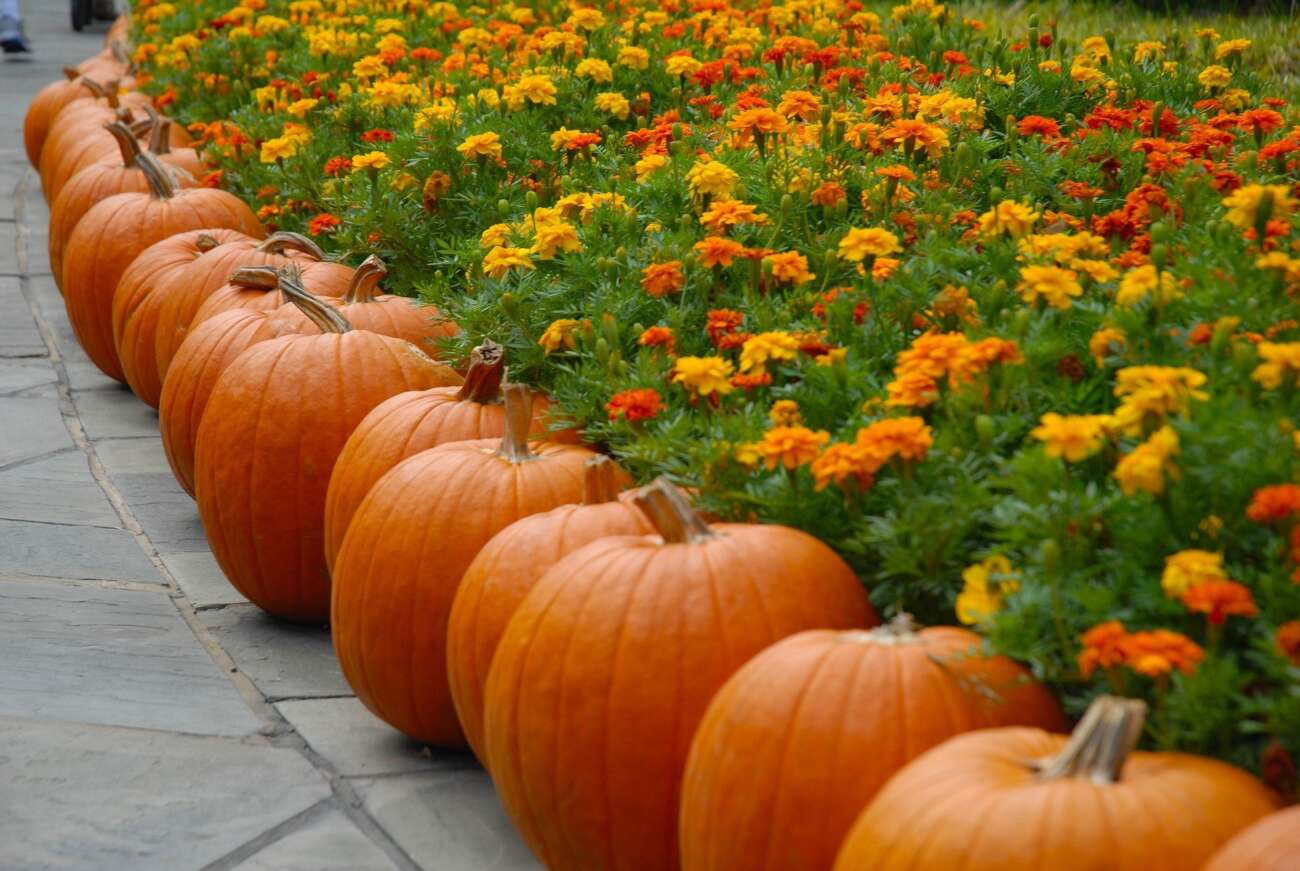Building A Home, Squash Bee Style
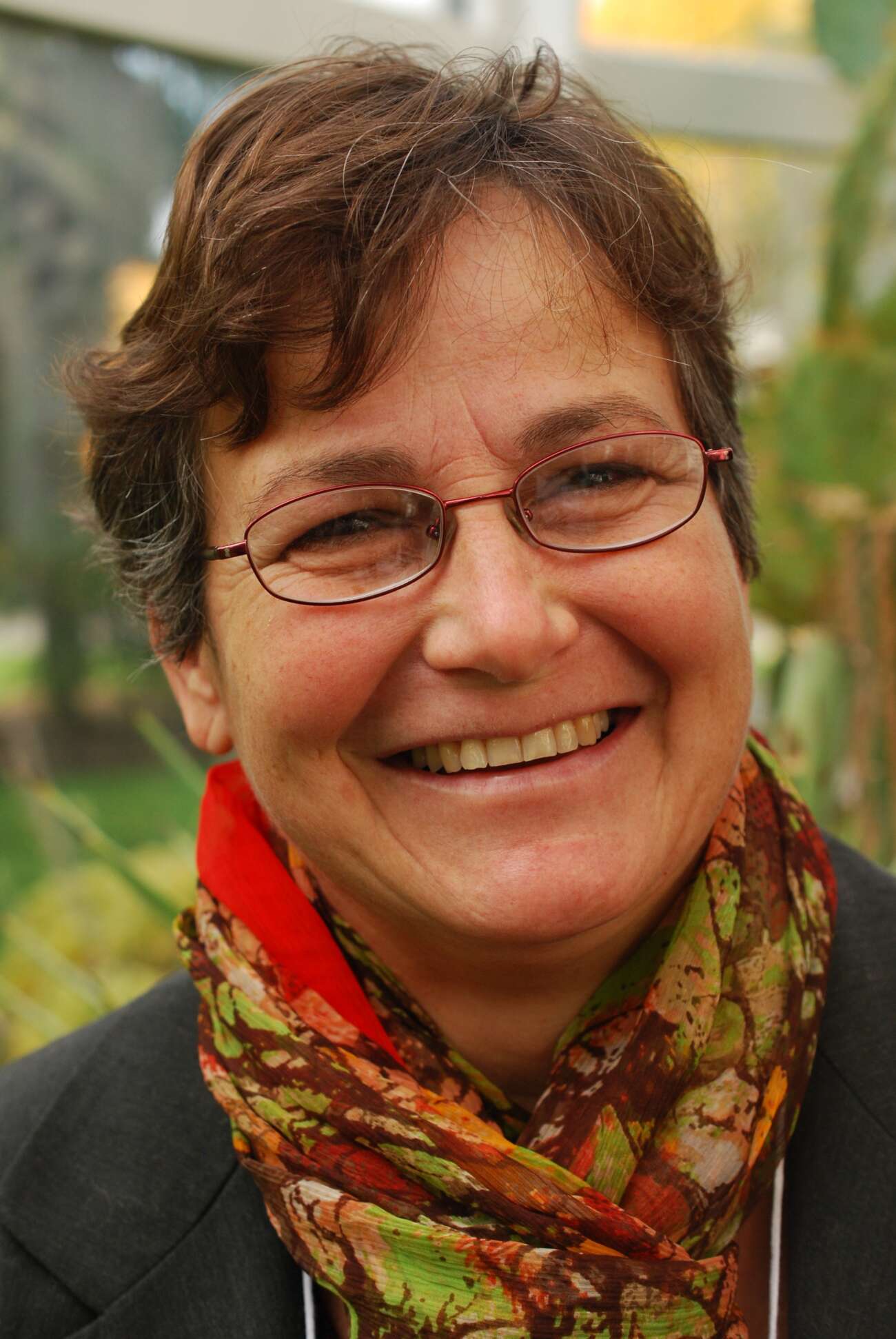
This special blog feature was written by Susan Chan. Based in Toronto, Susan Chan is an expert in the biology and agro-ecology of the hoary squash bee. She has been involved in on-the-ground projects to create pollinator habitat on Ontario farms, studies the effects of insecticides on ground-nesting bees and is deeply committed to supporting farmers in agricultural sustainability practices more widely.
Bet you couldn’t move 200 times your own weight in soil! That’s exactly what female hoary squash bees, the most important pollinators of pumpkins and squash in Ontario, do to build their nests in the ground.
Each female hoary squash bee starts her nest by excavating a vertical shaft about 18 cm deep, dumping the soil on the surface around her nest entrance (Circle A in diagram 1).
At the bottom of the shaft, she excavates a short lateral tunnel that ends in a cell, which she polishes and waterproofs by applying a glandular secretion to it (Circle B & C in diagram 1).
Diagram 1. Nesting activities of the hoary squash bee: (A) excavating a vertical shaft, dumping the soil at the nest entrance; (B) excavatinig lateral tunnels to make nest cells, backfilling the vertical shaft; (C) polishing the nest cell and coating with glandular secretions; (D) putting harvesting pollen and nectar into the waterproof cell; (E) laying an egg; (F) sealing up the cell with a mud door. Cells are excavated from the bottom up (i.e. cell #1 first, cell #5 last). Diagram designed and commissioned by D. Susan Willis Chan. Drawn by Ann Sanderson.
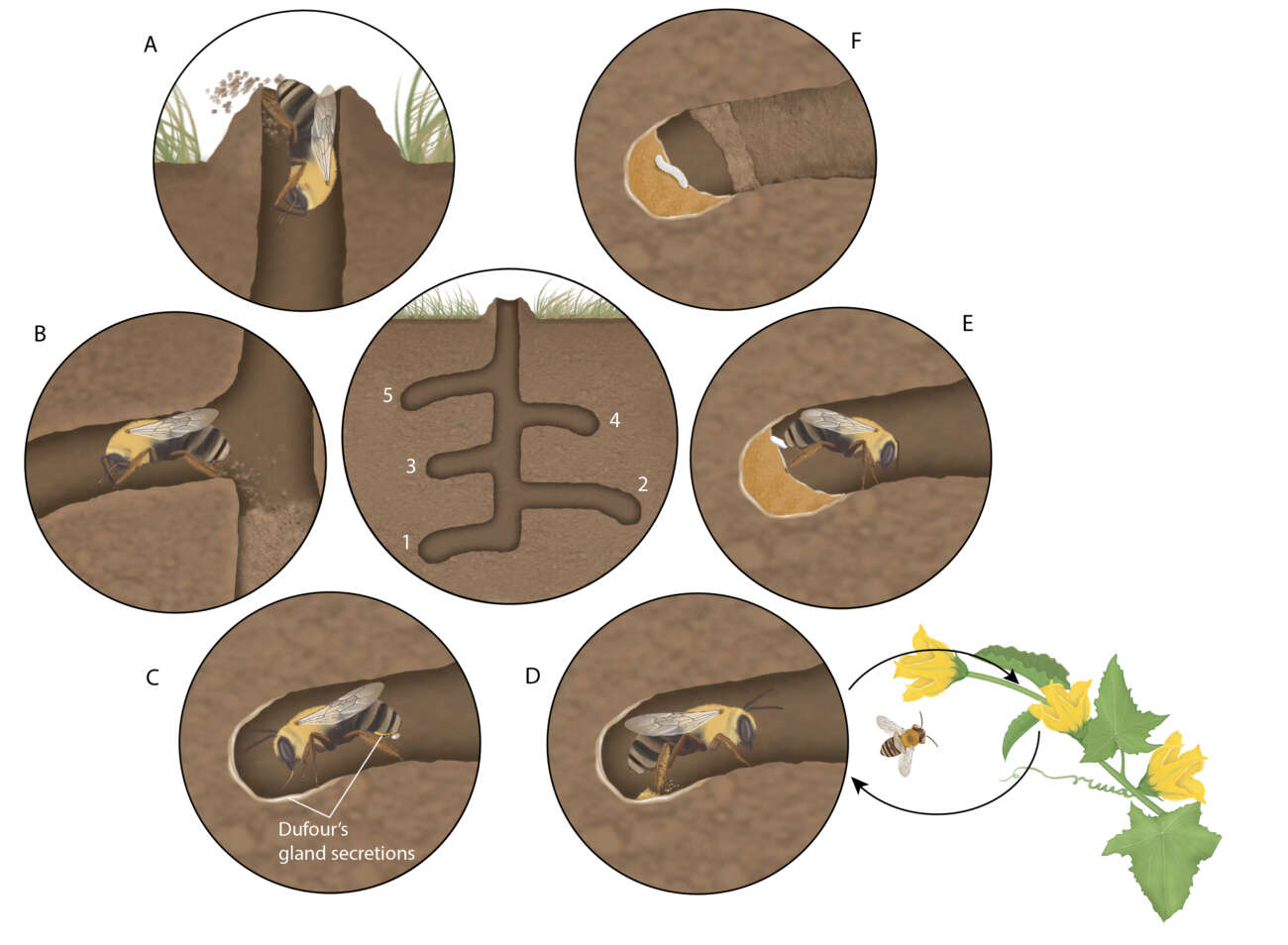
Into that cell, she gathers nectar and about 63,000 pumpkin pollen grains, which takes about 3 hours. On top of those provisions, she lays an egg and seals the cell with a mud door. The egg subsequently hatches and develop into a larva which eats the provisions (Circles D-F in diagram 1).
Female hoary squash bee entering her nest with a full pollen load of about 3000 pollen grains. Photo by Beatrice Chan, used with permission.
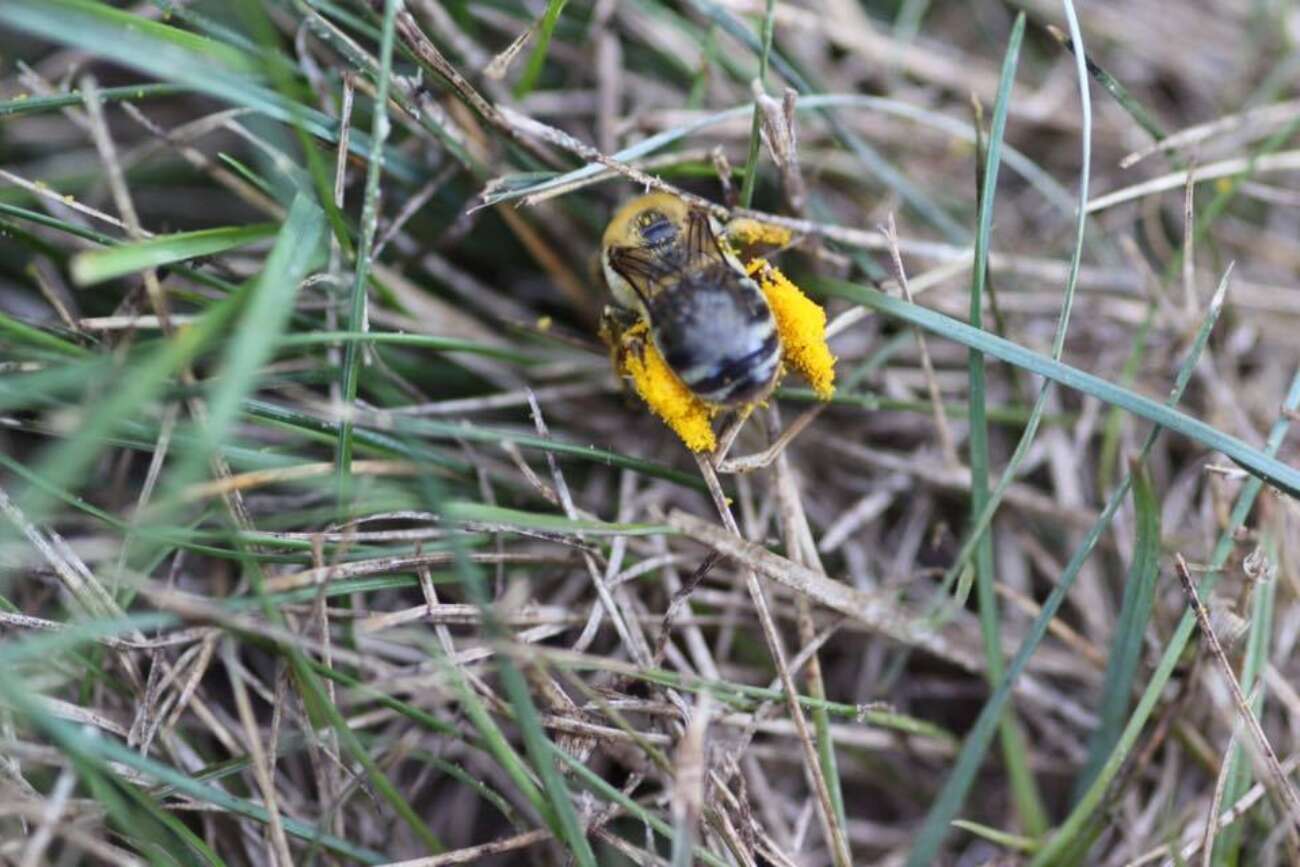
A hoary squash bee nest cell removed from the nest, showing the yellow pumpkin pollen coated with a layer of nectar and a white egg placed on its surface on the left and a full developed larva who has eaten all the provisions on the right. Photo by D. Susan Willis Chan.

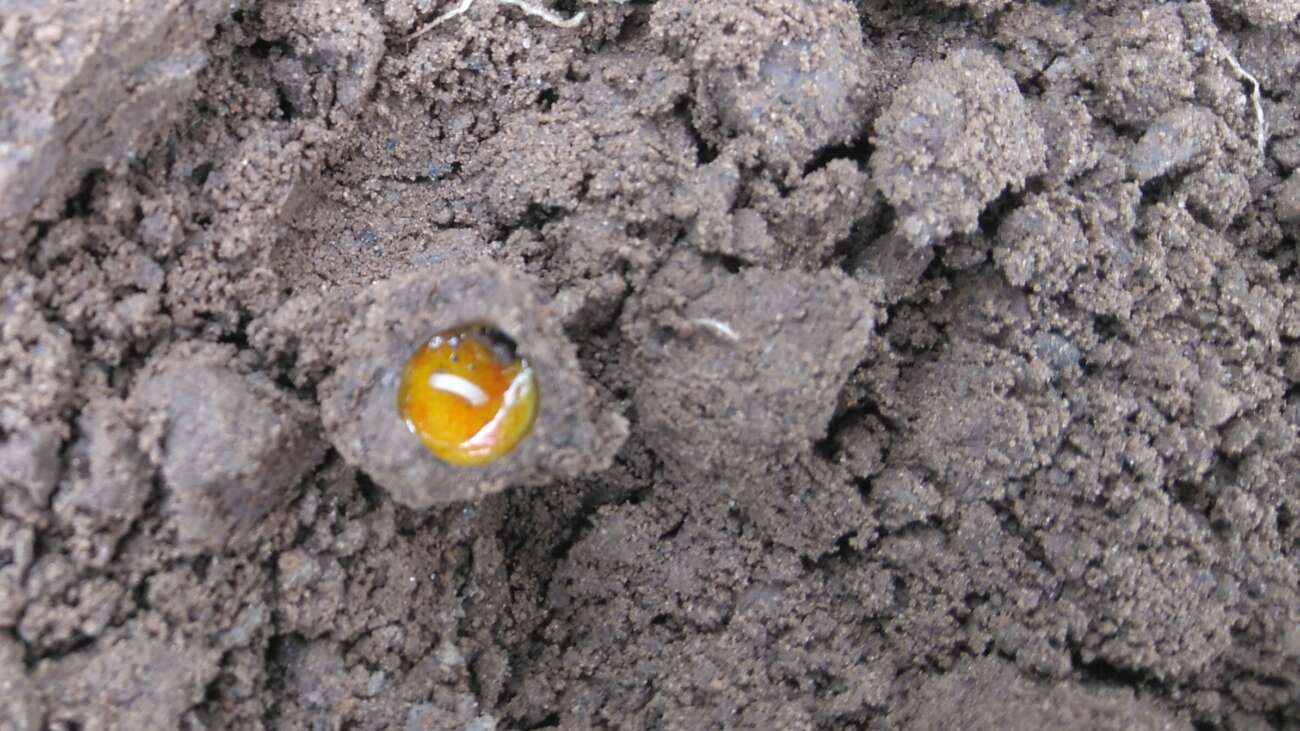
A nest usually has about 5 cells, each one higher up the main shaft than the previous. The soil from those is dumped into the main shaft, protecting the cells from nest parasites.
Hoary squash bee nest diagram showing the female bee excavating a lateral tunnel and backfilling the main shaft. Other lateral tunnels have been excavated below and have an egg or larva at various stages of development in them. The antechamber at the top of the nest is used by the female bee to rest or to guard her nest. Diagram designed and commissioned by D. Susan Willis Chan and drawn by Ann Sanderson.
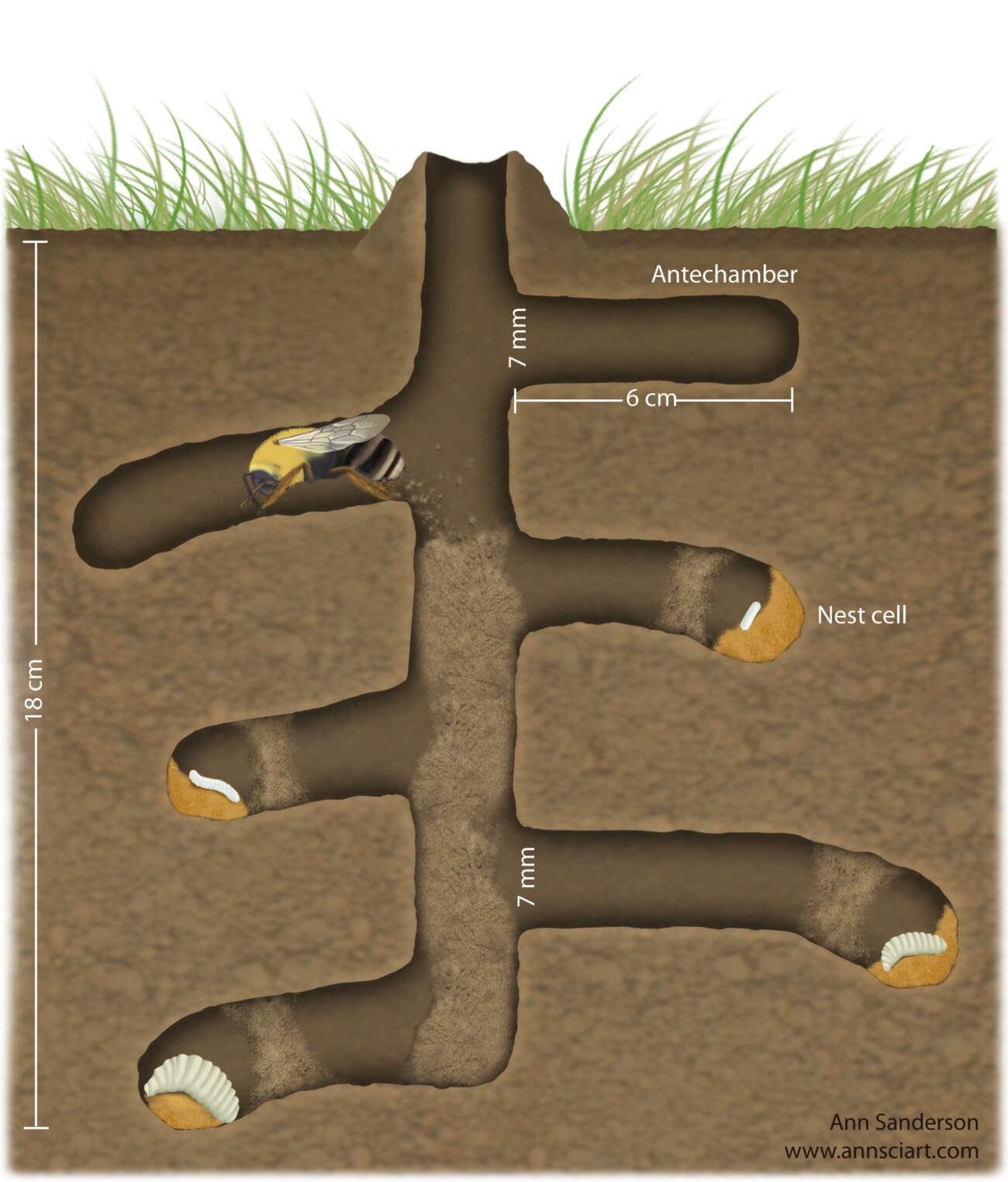
Although each female builds her own nest, the nests are often found in aggregations with many nests together, like a neighbourhood.
If they nest in agricultural soil, hoary squash bees can be exposed to insecticide residues in that soil. However, nesting aggregations can be easily protected by farmers, ensuring strong hoary squash bee populations to provide pollination to pumpkin and squash crops.
Here’s to hoary squash bees and farmers! You can thank them for your brightly lit jack-o-lantern and the squash soup you are enjoying this October.
